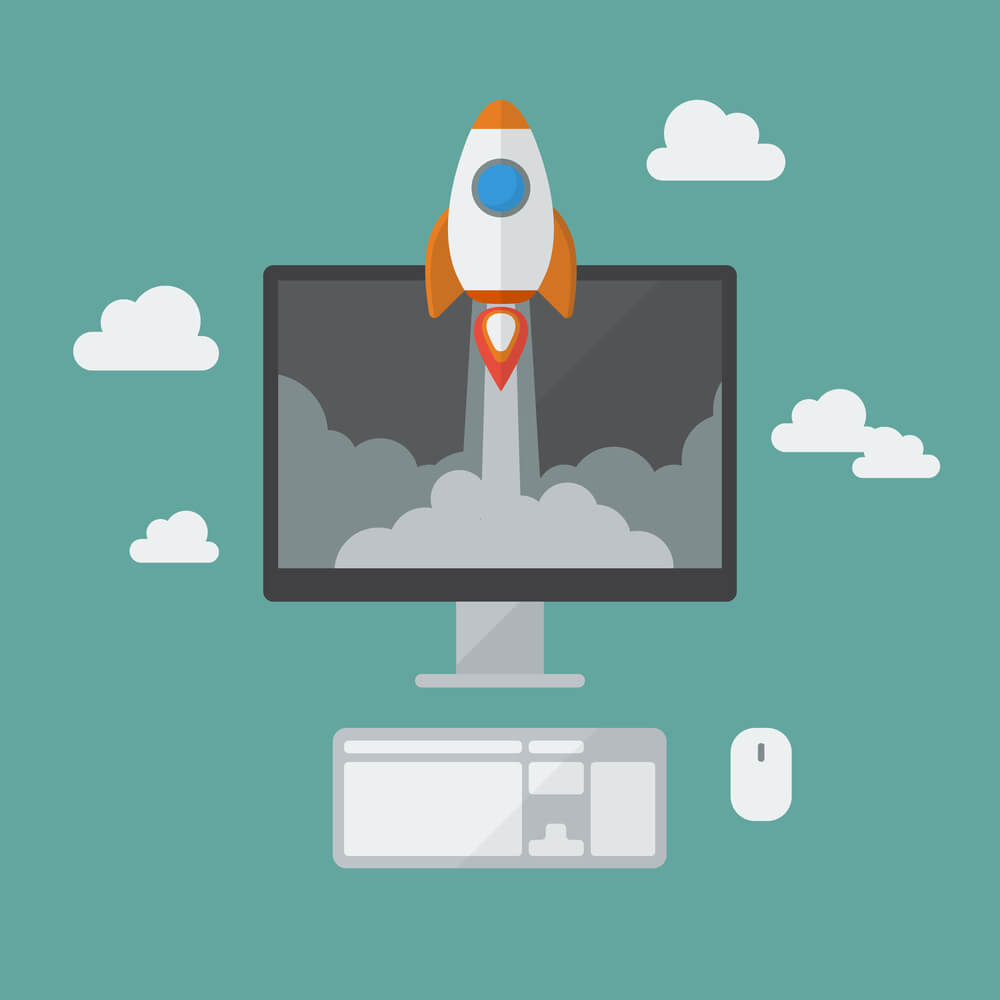Animation has firmly taken its place in our daily lives. We share funny GIFs, play video games, watch cartoons, fantasy movies, and add various camera effects to our photos and videos on Instagram without realizing that all of it would be impossible without animation. Besides, we’re used to thinking that animations are just for fun. Now, it’s time to learn how to use animation on your website so you can benefit your business!
What Is Animation?
Let’s start by noting that “animation” is a broad term that covers many different aspects and techniques of adding motion to images.
The word “animation” comes from the Latin “anima,” which means “soul.” In other words, animation can help you breathe soul into your website pages, make them livelier, more engaging, and user-friendly.
Not so long ago, the simplest GIFs and flash animations were used very sparsely, and only well-off businesses could afford them on their websites. The lack of accessible tools for creating animations and slower Internet speed made it impractical to utilize animations in web design.
Today, due to recent technological advancements, animation effects are much more cost-effective. They can enhance the user’s experience on your website and make the customer’s journey more comfortable and enjoyable.
Why Is Animation Important?

Animation is one of the biggest web design trends today. Web animation techniques can significantly improve your digital strategy with these features:
- Animations attract users’ attention to meaningful details. Moving elements among static elements always attract your gaze. With the help of animations, you can highlight the most important content on the page or draw customers’ attention to the goods that need to be sold in the first place.
- Animations improve navigation. By using animations, you can spotlight specific product categories or interface items to provide intuitive website navigation or create a captivating loading screen animation. Animated guidance helps users understand the coherence of the elements on your website.
- Animations give feedback. Animations in interfaces are often used to confirm or visually explain certain actions. For example, animated button effects may confirm a click or just show on hover, which makes them more interactive. A form’s negative shake can be a response to submitting a form with empty fields. This gives users a sense of interaction with a credible, living organism.
- Animations evoke emotions. With the help of high-quality animations, a dull interface can be turned into a creative and emotionally engaging one.
The Dawn of Web Animation
During the early days of the Internet, web pages were mostly static and boring. However, despite the poor technical capabilities, web designers made an effort to diversify the content and make it more dynamic and attractive. They created GIF animation. These eye-catching moving elements stood out prominently against the background of textual content, making it more attractive and engaging. They quickly gained popularity, and we still use them actively.
Then came Flash, a web plugin that allowed animators to explore new possibilities of dynamic web design. It was a revolutionary technology at that time, but the animations created with its help were heavy, and they greatly increased the page loading time. Flash animation wasn’t responsive or well-optimized, and it didn’t function properly on all devices.
Today, we have higher requirements for web animation. It must be light and flexible. Web designers are expected to create animations adaptable to different devices (mobile, desktop, and tablet). This is why Flash has become obsolete. Technologies like HTML5, CSS3, JavaScript, and SVG (scalable graphics) soon took over, and they remain the best solutions for web animation to date.
Types of Web Animation

Animating your website is a strategic process that must be aimed at improving user experience and making your site more attractive to visitors. You must carefully consider what types of animation to use, and when.
We offer you five popular types of animation that will make your website stand out from the crowd.
Welcoming animations
You’ll never get a second chance to make a first impression on visitors. By creating fantastic greeting animations, you can engage users from the get-go. The most attractive types of welcoming animations are the following:
- Interactive particle animations that respond to the user’s cursor movements. It can be hypnotizing, like on the Deutser website.
- Background videos are considered one of the most engaging ways to show your company’s vision and mission. The Hidden Worlds of the National Parks website is a perfect example.
- 3D animations are a technology where objects have volume, shadows, and reflections. By using 3D animations, web designers can create a variety of interfaces with gaming elements, make unique product reviews and animated logos, or even tell a story on websites.
Some designers prefer to combine 2D and 3D objects, thereby creating a more profound and sophisticated user experience. As an example, we can mention websites like Unitepeople, Malibuboats and Beobank where 2D and 3D visualization are used in different variations.
Loading animations
Loading speed is a website’s critical success factor. Showing users an animation of the loading progress can keep them engaged, entertain them while they are waiting, and explain what is happening at the same time.
Navigation animations
One of the best examples of navigation animations are sliding menus. Whether they occupy the side or the top of your website, they allow the navigational elements to be accessible without interfering with the page content. This is crucial when you’re trying to create a responsive design that will work well on smartphones, as there’s a limited amount of space available on smaller screens.
Hoover animations
Animations with hover effects show users whether the objects are clickable. For example, buttons can change shape or color, light up, or show hints. Hover animations can also inform users that the action they’ve performed was successful. For example, the flashing or shaking of a button can confirm a click.
Image galleries animation
You can use a slideshow or a carousel effect to ensure a smooth and visually pleasing transition from one image to another in your galleries. This can not only help you save space, but also narrate a story. Or you can create an animated list of your products using the same visual effects to attract customers’ attention.
When to Use Web Animation?

With modern technologies, you can animate pretty much everything on your website: text (animated headlines, scrolling text, text fading), navigation elements (change of size, color, arrangement, or position), and images (slideshows or cinemagraphs).
In the past, animations were much more pronounced. For example, it wasn’t uncommon to come across websites running entirely on Flash, where most elements were animated.
But you should always look for a balance when introducing new trends. Animation can make your website more professional and attractive if you use it wisely. It should be embedded seamlessly and organically, and it shouldn’t feel jumpy or machinelike. And animation always needs to serve a specific purpose and enhance usability.
Before integrating animation into your website design, make sure to:
- Examine your existing website design. Does it really need any improvement?
- Check your target audience and what devices they use when browsing your website.
- Check your website loading speed.
- Specify the goals you want to achieve using web animations.
- Сhoose animation techniques that match your goals.
When implementing animation effects on your site, you should carefully consider all the possible pitfalls. Despite all their benefits, animations may sometimes do more harm than good for your UX, especially if abused. Here are some tips that will help you:
Tip #1. You may want to give up animations if they slow down the loading speed of your website. You can test your website performance using Google PageSpeed Insights, Gtmetrix.com, Web Page Test, Load Impact, and others.
Tip #2. Make sure your animations are responsive. A responsive website design is vital if you want to succeed. If your site works properly only on a desktop, you will lose users who prefer using mobile devices to browse the web.
Tip #3. Animations should attract attention but not distract. Make sure your animations are not too long or too hectic. This is especially critical for elements users often interact with. For a couple of times, sophisticated animations can entertain them, but then they can simply become annoying.
Tip #4. Start with small animated elements on your website. Animations should serve as a tool for achieving the goal rather than the goal itself. No need to overload your site with animation just for the sake of it. Its implementation should be justified and make perfect sense.
Bring Your Website to Life with Animation
Animation is an effective instrument that, in many cases, can save the day and make your website stand out. However, finding an optimal balance that won’t overwhelm your users is the key to success when it comes to integrating animation into your website. Animations can attract attention, improve user experience, boost engagement, or just entertain. But they must always be consistent with your goal.

